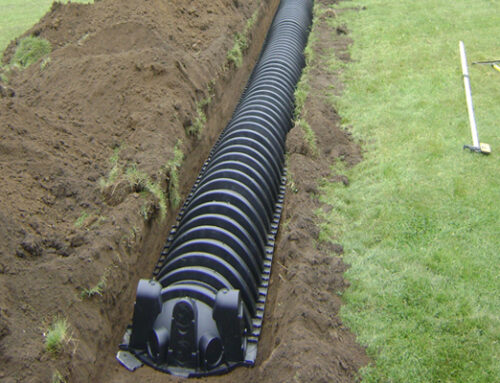Agricultural farm drainage is essential for maintaining soil health, productivity, and profitability. Proper farmland drainage system design plays a crucial role in controlling water levels, preventing crop damage, and improving the overall quality of the land.
However, many factors must be considered when designing such a system. Hodgman Drainage Company, Inc. has more to share on the subject!
Why Is Design Important in Agricultural Farm Drainage?
Improperly designing farmland drainage systems can cause several issues, including insufficient water removal leading to standing water and waterlogged soil that hampers crop growth. It can also result in uneven drainage patterns, where some areas remain too wet while others don’t have enough drainage.
Additionally, if the drainage system is not appropriately designed, it may not be able to handle heavy rainfall and lead to increased waterlogging problems and crop damage. To prevent this, it is vital to plan and install a drainage system that is well-designed and tailored to the unique features of the land.
Also, read: How Do You Find the Right Agricultural Drainage Contractor?
Critical Inclusions to Agricultural Farm Drainage Design | Agricultural Farm Drainage
1. Topography
That and the slope of the land helps to determine the natural water flow patterns. It helps identify areas prone to water accumulation & plan drainage system layouts accordingly.
2. Soil Permeability & Type | Agricultural Farm Drainage
Soil characteristics, such as texture, structure, and permeability, help determine their varying water-holding capacities and drainage requirements. Clay soils, for example, naturally drain poorly and may require more extensive drainage systems.
3. Groundwater Levels
Determining the water table depth & seasonal variations in groundwater level helps find the optimal depth & spacing of drainage tile lines to lower the water table & prevent waterlogging effectively.
4. Drainage Capacity | Agricultural Farm Drainage
The required drainage capacity is calculated based on soil infiltration rates, rainfall intensity, and the area to be drained. Proper sizing of drainage tiles, pipes, or ditches ensures sufficient water removal without overloading the system.
5. System Layout & Configuration
The layout of farmland drainage systems is planned based on the topography, crop rotation patterns, and practical considerations. Consider the optimal spacing & depth of drain lines and the placement of main collectors and outlet points.
6. Erosion Control | Agricultural Farm Drainage
Implementing erosion control measures such as terracing, grassed waterways, and buffer strips helps to minimize erosion and protect valuable topsoil. These features help prevent soil erosion caused by fast-moving water in drainage systems.
7. Environmental Considerations
It is necessary to evaluate the potential environmental effects of agricultural farm drainage systems, such as the release of surplus nutrients, sediment, or pesticides. Utilizing best management practices aids in reducing any adverse impacts and encourages sustainable agriculture.
8. Maintenance & Inspection
The drainage system should be designed with accessibility in mind, allowing for regular maintenance & inspection. That includes provisions for cleaning or flushing drain lines, removing organic debris, and ensuring long-term system functionality.
9. Regulatory Requirements | Agricultural Farm Drainage
The drainage design should comply with local & state regulatory ordinances of Minnesota. Ensure compliance with applicable laws & obtain necessary approvals before implementing any drainage design.
Considering these critical aspects, you can design an effective and efficient agricultural farmland drainage system that promotes proper water management and contributes to optimal crop growth.
Have Us Design & Implement Your Agricultural Drainage Layout!
Hodgman Drainage Company, Inc., serving agriculturalists in Prinsburg, MN, has delivered sophisticated agricultural farm drainage services since the ’80s. We will assess your farmland for soil quality & vulnerabilities and lay out a plan to stabilize soil drainage while preserving soil fertility for sustainable farming & groundwater replenishment.
Please feel free to contact us. Thank you for considering our farmland drainage services!



